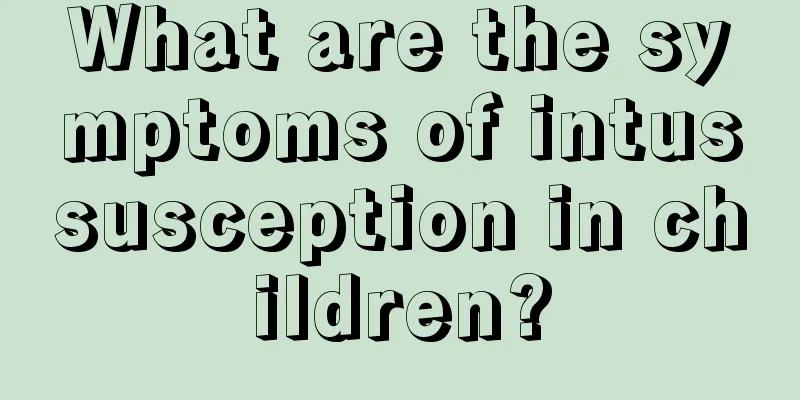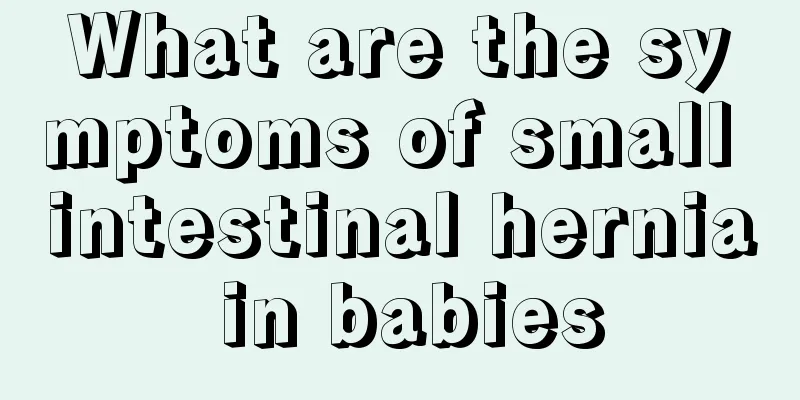What are the symptoms of intussusception in children?

|
Intussusception is a very common acute abdominal disease in infants and young children. It is a cause of intestinal obstruction, which is more common in obese children. The onset of this disease is very sudden. Once it occurs, the patient may feel severe abdominal cramps, vomiting, and blood in the stool. These are very common symptoms of intussusception. To treat this disease, a combination of Chinese and Western methods is needed to alleviate the symptoms. The typical clinical manifestations of intussusception in children are the tetrad of paroxysmal abdominal pain, vomiting, bloody stools, and intra-abdominal masses, as well as changes in systemic condition. 1. Abdominal pain is the main symptom of intussusception. More than 90% of patients present with typical spasmodic abdominal pain. Abdominal pain occurs suddenly and comes in waves. The children show sudden and violent crying and screaming, pale face, cold sweat, flexion of lower limbs or protrusion of abdomen. It usually calms down within a few minutes and then recurs after a short interval. During the interval, he was conscious and at ease. After multiple attacks, the intervals between attacks become shorter and there is drowsiness during the intervals. After 24 hours, the frequency of attacks may decrease, and the severity of the abdominal pain may also be masked by drowsiness. After intestinal necrosis and intestinal paralysis occur, abdominal pain may lose its paroxysmal characteristics. For children who come to the hospital for treatment in the late stage, the history of paroxysmal crying should be carefully inquired. In addition, less than 10% of infants may present with painless intussusception, and they are already mentally depressed and drowsy when they seek medical treatment, mostly due to shock caused by severe pain stimulation or massive bleeding. 2. Vomiting is an early symptom of intussusception. It is mostly reflex vomiting caused by the stretching of the mesentery. The vomitus is the stomach contents or intestinal contents. Affected children often refuse to breastfeed or eat. In the later stages, the vomiting is fecal-smelling liquid, which indicates that the obstruction caused by intussusception is very serious. 3. Blood in the stool is a characteristic of intussusception in infants. Blood in the stool may appear within 24 hours of onset, mostly dark red jam-like stool. Sometimes it is dark red blood, and sometimes it is just a few streaks of blood. Ileocolic intussusception causes bloody stools in the early stages. In small intestinal intussusception, blood in the stool appears later. In patients who do not have spontaneous bowel movements, blood may be seen on the finger cuff during anorectal examination. 4. Abdominal mass: In about 80% of cases, a mass caused by intussusception can be felt in the abdomen, and the mass is mostly distributed along the colon area. The surface is smooth and movable, the shape is sausage or banana-like, medium hard, non-tender, and slightly elastic. This is the most significant sign to establish the diagnosis of intussusception. 5. General condition: As the intussusception progresses, the child gradually becomes listless, has a dull expression, and appears seriously ill. After 48 hours, intestinal necrosis may occur, producing obvious signs of peritonitis. The general condition deteriorates, showing obvious symptoms of poisoning and signs of shock, including high fever, severe dehydration, and electrolyte imbalance. Intussusception in adults often presents as chronic, recurrent disease. 83% to 90% of cases have organic lesions that lead to intussusception. Because the intestinal lumen of adults is larger, complete intestinal obstruction rarely occurs. And they can often reset themselves. Therefore, chronic, intermittent, and incomplete intestinal obstruction is the main feature of its clinical manifestations. The main clinical manifestations are spasmodic abdominal pain, abdominal mass, nausea and vomiting, abdominal distension, and blood in the stool. Literature reports that 75% of cases are accompanied by abdominal pain, and more than half of the cases have nausea, vomiting, abdominal masses, and bloody stools. If a child suffers from intussusception, the symptoms will be more obvious. This is mainly because children's resistance is not as good as that of adults. If no treatment is received within 48 hours, it is likely to cause intestinal necrosis, and the situation may even worsen. It will also cause very obvious abdominal symptoms and persistent high fever. |
<<: Can children eat watermelon when they have a cold?
>>: How to treat baby's cough after fever subsides
Recommend
Baby's lower eyelid is dark
Babies are a group of people with special physica...
Children's platelet count is 460
Platelets are small pieces of cytoplasm and are a...
Why do children refuse to eat?
There are many reasons why children don’t eat. If...
What should I do if my child has a fever of 38 degrees?
Medically speaking, there are two explanations fo...
What is normal blood pressure for teenagers?
Clinically, there is a disease that can cause hig...
How many times a day is normal for a newborn baby to poop?
For many parents, in order to ensure that their c...
What causes knee pain in children?
A person's growth process is relatively long,...
Why does my child keep blinking recently?
Nowadays, more and more children have been expose...
Baby wakes up with swollen eyes
For mothers, it is so adorable to see the cute lo...
What are the reasons for the baby's red bloodshot eyes?
As we all know, when people lack sleep and are ov...
Reasons why babies cry a lot before going to bed
Some parents report that their babies cry a lot b...
What to do if your child drinks bubble water
Children like to blow bubbles when they are young...
One year old baby has black stool
When babies are young, their stomach digestive sy...
What causes hiccups in infants and young children?
The baby's body is very fragile, so once the ...
Treatment for fever and headache in children
The problem of fever and headache in young childr...









